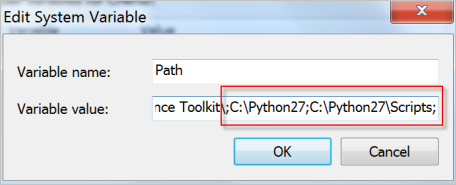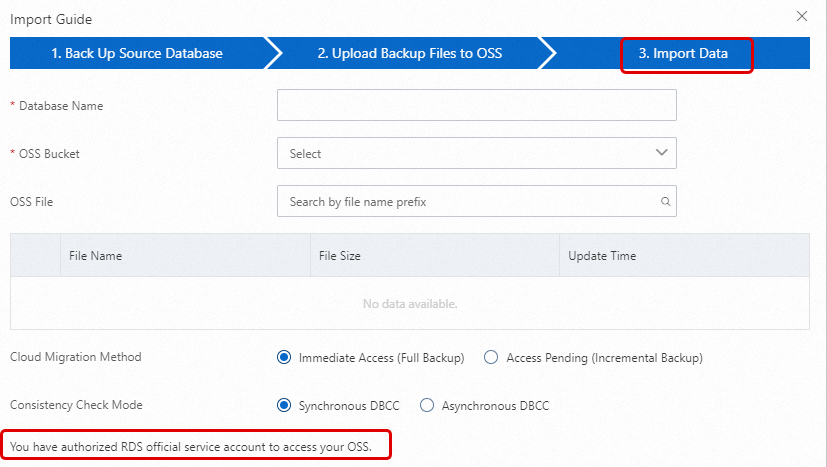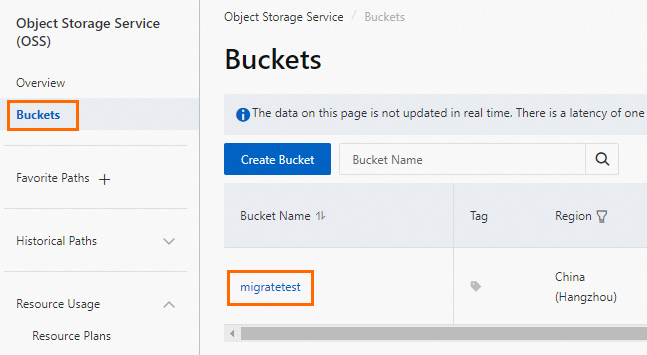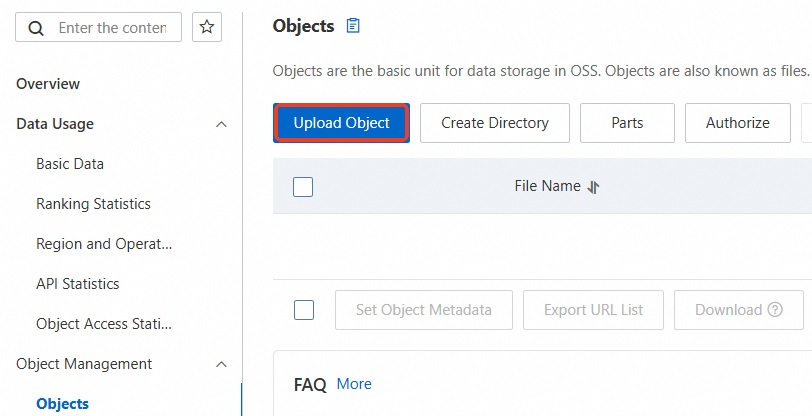To migrate data of multiple or all databases from a self-managed SQL Server instance to an ApsaraDB RDS for SQL Server instance, ApsaraDB RDS for SQL Server provides an instance-level migration method to migrate the data to an RDS instance. You need to only upload the full backup files of these databases to the same folder in an Object Storage Service (OSS) bucket, and then run the required script to migrate data to an RDS instance.
If you use a database-level migration method, you can migrate the data of only one database at a time. ApsaraDB RDS for SQL Server provides the following OSS-based cloud migration methods:
Prerequisites
The source database is a self-managed SQL Server instance.
The destination RDS instance meets the following requirements:
The RDS instance runs SQL Server 2008 R2, SQL Server 2012, or later. For more information about how to create an RDS instance, see Create an ApsaraDB RDS for SQL Server instance.
If the RDS instance runs SQL Server 2008 R2, databases are created on the RDS instance. Make sure that each database whose data you want to migrate from the self-managed SQL Server instance has a counterpart with an identical name on the RDS instance. In addition, make sure that the created databases are empty. For more information, see Create accounts and databases.
NoteIf your RDS instance runs SQL Server 2012 or later, ignore this requirement.
The available storage of the RDS instance is sufficient. If the available storage is insufficient, you must expand the storage capacity of the RDS instance before you start the migration. For more information, see Change the specifications of an ApsaraDB RDS for SQL Server instance.
OSS is activated. For more information, see Activate OSS.
If you use a RAM user, make sure that the following requirements are met:
The AliyunOSSFullAccess and AliyunRDSFullAccess policies are attached to the RAM user. For more information about how to grant permissions to RAM users, see Use RAM to manage OSS permissions and Use RAM to manage ApsaraDB RDS permissions.
The service account of ApsaraDB RDS is authorized by using your Alibaba Cloud account to access the OSS bucket.
A custom policy is manually created by using your Alibaba Cloud account and is attached to the RAM user. For more information about how to create a custom policy, see the Create a custom policy on the JSON tab section in Create custom policies.
Limits
Only full backup files can be used for the data migration.
Billing
If you use the method described in this topic to migrate data, you are charged only for the use of OSS buckets.

Scenario | Billing rule |
Upload backup files to an OSS bucket | Free of charge. |
Store backup files in an OSS bucket | You are charged storage fees. For more information, visit the Pricing page of OSS. |
Migrate backup files from an OSS bucket to your RDS instance |
|
Preparations
Install Python 2.7.18. For more information, visit the Python official website.
Check whether Python 2.7.18 is installed.
Windows operating systems
Run the
c:\Python27\python.exe -Vcommand to check the Python version. IfPython 2.7.18is displayed, Python 2.7.18 is installed.If the system prompts that the preceding command is not an internal or external command, add the Python installation path and the pip command path to the Path environment variable.

Mac, Linux, or Unix operating systems
Run the
python -Vcommand to check the Python version. IfPython 2.7.18is displayed, Python 2.7.18 is installed.
Use one of the following methods to install the SDK dependency package:
Method 1: Run pip commands
pip install aliyun-python-sdk-rds pip install oss2Method 2: Use the source code
# Clone the API repository. git clone https://github.com/aliyun/aliyun-openapi-python-sdk.git # Install the SDK core repository of Alibaba Cloud. cd aliyun-python-sdk-core python setup.py install # Install the ApsaraDB RDS SDK. cd aliyun-python-sdk-rds python setup.py install # Clone the OSS SDK. git clone https://github.com/aliyun/aliyun-oss-python-sdk.git cd aliyun-oss-python-sdk # Install oss2. python setup.py install
Step 1: Back up all databases on the self-managed SQL Server instance
For data consistency purposes, we recommend that you stop data writes to these databases during the full backup.
If you do not use the backup script to perform the full backup, the names of the generated backup files must follow the format of
Database name_Backup type_Backup time.bak, such asTestdb_FULL_20180518153544.bak. If the name is in a different format, the backup fails.
Download the backup script file.
Double-click the backup script file to open it by using Microsoft SQL Server Management Studio (SSMS). For more information about how to use SSMS for connections, see official documentation.
Configure the parameters described in the following table.
Parameter
Description
@backup_databases_list
The name of the database that you want to back up. If you specify multiple databases, separate the names of the databases with semicolons (;) or commas (,).
@backup_type
The backup type. Valid values:
FULL: full backup
DIFF: incremental backup
LOG: log backup
ImportantIn this example, the value must be FULL.
@backup_folder
The directory that is used to store backup files on the self-managed database. If the specified directory does not exist, the system automatically creates one.
@is_run
Specifies whether to perform a backup or a check. Valid values:
1: performs a backup.
0: performs a check.
Run the backup script to back up the specified databases and store the backup files to the specified directory.

Step 2: Upload backup file to the OSS bucket
If an OSS bucket is created, check whether the bucket meets the following requirements:
The storage class of the OSS bucket is Standard. The storage class cannot be Standard, Infrequent Access (IA), Archive, Cold Archive, or Deep Cold Archive. For more information, see Storage classes.
Data encryption is not enabled for the OSS bucket. For more information, see Data encryption.
If no OSS bucket is available, create an OSS bucket.
Log on to the OSS console.
In the left-side navigation pane, click Buckets. On the Buckets page, click Create Bucket.
Configure the following parameters. Retain the default values for other parameters.
ImportantThe created OSS bucket is used only for the data migration and is no longer used after the data migration is complete. You need to only configure key parameters. To prevent data leaks and excessive costs, we recommend that you delete the OSS bucket after the data migration is complete at the earliest opportunity.
Do not enable data encryption when you create an OSS bucket. For more information, see Data encryption.
Parameter
Description
Example
Bucket Name
The name of the OSS bucket. The name is globally unique and cannot be modified after it is configured.
Naming conventions:
The name can contain only lowercase letters, digits, and hyphens (-).
It must start and end with a lowercase letter or a digit.
The name must be 3 to 63 characters in length.
migratetest
Region
The region of the OSS bucket. If you want to upload data to the OSS bucket from an Elastic Compute Service (ECS) instance over an internal network and then restore the data to the RDS instance over the internal network, make sure that the OSS bucket, ECS instance, and RDS instance reside in the same region.
China (Hangzhou)
Storage Class
The storage class of the bucket. Select Standard. The cloud migration operations described in this topic cannot be performed in buckets of other storage classes.
Standard
Upload backup files to the OSS bucket.
After the full backup on the self-managed SQL Server instance is complete, you must use one of the following methods to upload the generated full backup file to the OSS bucket. The OSS bucket and the RDS instance must reside in the same region. This way, the backup file is uploaded from the RDS instance to the bucket through the internal network, which is faster and does not incur Internet traffic fees.
Step 3: Run the migration script to complete the migration task
Download the migration script package.
Decompress the migration script package and run the following command to view the parameters that you need to specify:
python ~/Downloads/RDSSQLCreateMigrateTasksBatchly.py -hA similar result is returned:
RDSSQLCreateMigrateTasksBatchly.py -k <access_key_id> -s <access_key_secret> -i <rds_instance_id> -e <oss_endpoint> -b <oss_bucket> -d <directory>Parameters
Parameter
Description
access_key_id
The AccessKey ID of the Alibaba Cloud account to which the RDS instance belongs.
access_key_secret
The AccessKey secret of the Alibaba Cloud account to which the RDS instance belongs.
rds_instance_id
The ID of the RDS instance.
oss_endpoint
The endpoint of the OSS bucket that stores the backup files. For more information about how to obtain the endpoint, see Bucket overview.
oss_bucket
The name of the OSS bucket that stores the backup files.
directory
The folder that stores the backup files in the OSS bucket. If the backup files are stored in the root folder, enter a forward slash (
/).Run the migration script to complete the migration task.
You can run the migration script to migrate all the backup files that meet the specified conditions from the
Migrationdatafolder in the OSS bucket namedtestdatabucketto the RDS instance whose ID is rm-2zesz5774ud8s****.python ~/Downloads/RDSSQLCreateMigrateTasksBatchly.py -k LTAIQ**** -s BMkIUhroub******** -i rm-2zesz5774ud8s**** -e oss-cn-beijing.aliyuncs.com -b testdatabucket -d MigrationdataView the progress of the migration task.
Log on to the ApsaraDB RDS console and go to the Instances page. In the top navigation bar, select the region in which the RDS instance resides. Then, find the RDS instance and click the ID of the instance.
Perform the following steps based on the SQL Server version of your RDS instance:
RDS SQL Server 2008 R2
In the left-side navigation pane of the page that appears, click Database Migration to Cloud. You can view all the migration tasks that you have submitted.
NoteYou can click Refresh in the upper-right corner of the page to view the latest status of the migration tasks.
SQL Server 2012 and later
In the left-side navigation pane of the page that appears, click Backup and Restoration. Then, click the Backup Data Upload History tab.
NoteBy default, the migration records over the last seven days are displayed. You can specify a time range to view the migration tasks over the specified time range.
Common errors
Error messages and solutions
Error message | Cause | Solution |
| The AccessKey ID that is used to call API operations is invalid. | Use the valid AccessKey ID and AccessKey secret. For more information, see FAQ about AccessKey pairs. |
| The AccessKey secret that is used to call API operations is invalid. | |
| The RDS instance to which you want to migrate data does not run SQL Server. | Use an RDS instance that runs SQL Server. |
| The ID of the RDS instance does not exist. | Check whether the ID of the RDS instance is valid. If the ID of the RDS instance is invalid, enter the valid instance ID. |
| The endpoint that is used to connect to the OSS bucket is invalid. | Check whether the endpoint that is used to connect to the OSS bucket is valid. If the endpoint is invalid, enter the valid endpoint. For more information about how to obtain the endpoint, see Bucket overview. |
| The OSS bucket does not exist. | Check whether the entered name of the OSS bucket is valid. If the entered name is invalid, enter the valid name. |
| The required folder does not exist in the OSS bucket, or the folder does not contain the backup files that meet the specified conditions. | Check whether the folder exists in the OSS bucket and whether the folder contains the backup files that meet the specified conditions. If the folder does not exist in the OSS bucket and the folder does not contain backup files that meet the specified conditions, create the folder in the OSS bucket and import backup files that meet the specified conditions. |
| The names of the backup files do not meet the naming conventions. | If you do not use the backup script to perform the full backup, the names of the generated backup files must follow the format of |
| The RAM user does not have the required permissions. | Attach the AliyunOSSFullAccess and AliyunRDSFullAccess policies to the RAM user. For more information about how to authorize a RAM user, see Authorize a RAM user. |
| An error occurs when an API operation is called. |
Error codes
HTTP Status Code | Error | Description | Description |
403 | InvalidDBName | The specified database name is not allowed. | The error message returned because the specified database names are invalid. For example, if the name of a database is the same as the name of a system database, the name of the database is invalid. |
403 | IncorrectDBInstanceState | Current DB instance state does not support this operation. | The error message returned because the RDS instance is not in a required state. For example, the RDS instance is in the Creating state. |
400 | IncorrectDBInstanceType | Current DB instance type does not support this operation. | The error message returned because the RDS instance does not run SQL Server. |
400 | IncorrectDBInstanceLockMode | Current DB instance lock mode does not support this operation. | The error message returned because the RDS instance is in a locking state that does not support the operation. |
400 | InvalidDBName.NotFound | Specified one or more DB name does not exist or DB status does not support. | The error message returned because the specified databases cannot be found.
|
400 | IncorrectDBType | Current DB type does not support this operation. | The error message returned because the operation is not supported by the database engine that is run on the RDS instance. |
400 | IncorrectDBState | Current DB state does not support this operation. | The error message returned because the databases are being created or receiving data from another migration task. |
400 | UploadLimitExceeded | UploadTimesQuotaExceeded: Exceeding the daily upload times of this DB. | The error message returned because the number of data migration tasks that are performed on a single database on the day exceeds 20. |
400 | ConcurrentTaskExceeded | Concurrent task exceeding the allowed amount. | The error message returned because the number of data migration tasks that are performed on a single database on the day exceeds 500. |
400 | IncorrectFileExtension | The file extension does not support. | The error message returned because the file name extensions of the backup files are invalid. |
400 | InvalidOssUrl | Specified oss url is not valid. | The error message returned because the specified URL to download backup files from the OSS bucket is invalid. |
400 | BakFileSizeExceeded | Exceeding the allowed bak file size. | The error message returned because the total size of the backup files exceeds 3 TB. |
400 | FileSizeExceeded | Exceeding the allowed file size of DB instance. | The error message returned because the size of the data restored from the backup files exceeds the available storage of the RDS instance. |
Related operations
Operation | Description |
Creates a data migration task. | |
Opens the database to which backup data is migrated on an ApsaraDB RDS for SQL Server instance. | |
Queries the tasks that are created to migrate the backup data of an ApsaraDB RDS for SQL Server instance. | |
Queries the backup file details of a backup data migration task for an ApsaraDB RDS for SQL Server instance. |



 icon, select the backup file that you want to upload, and then click Open to upload the backup file to the OSS bucket.
icon, select the backup file that you want to upload, and then click Open to upload the backup file to the OSS bucket. 

